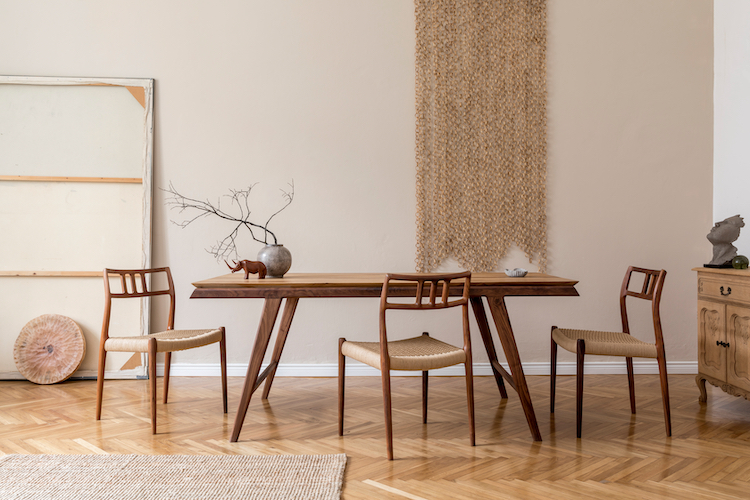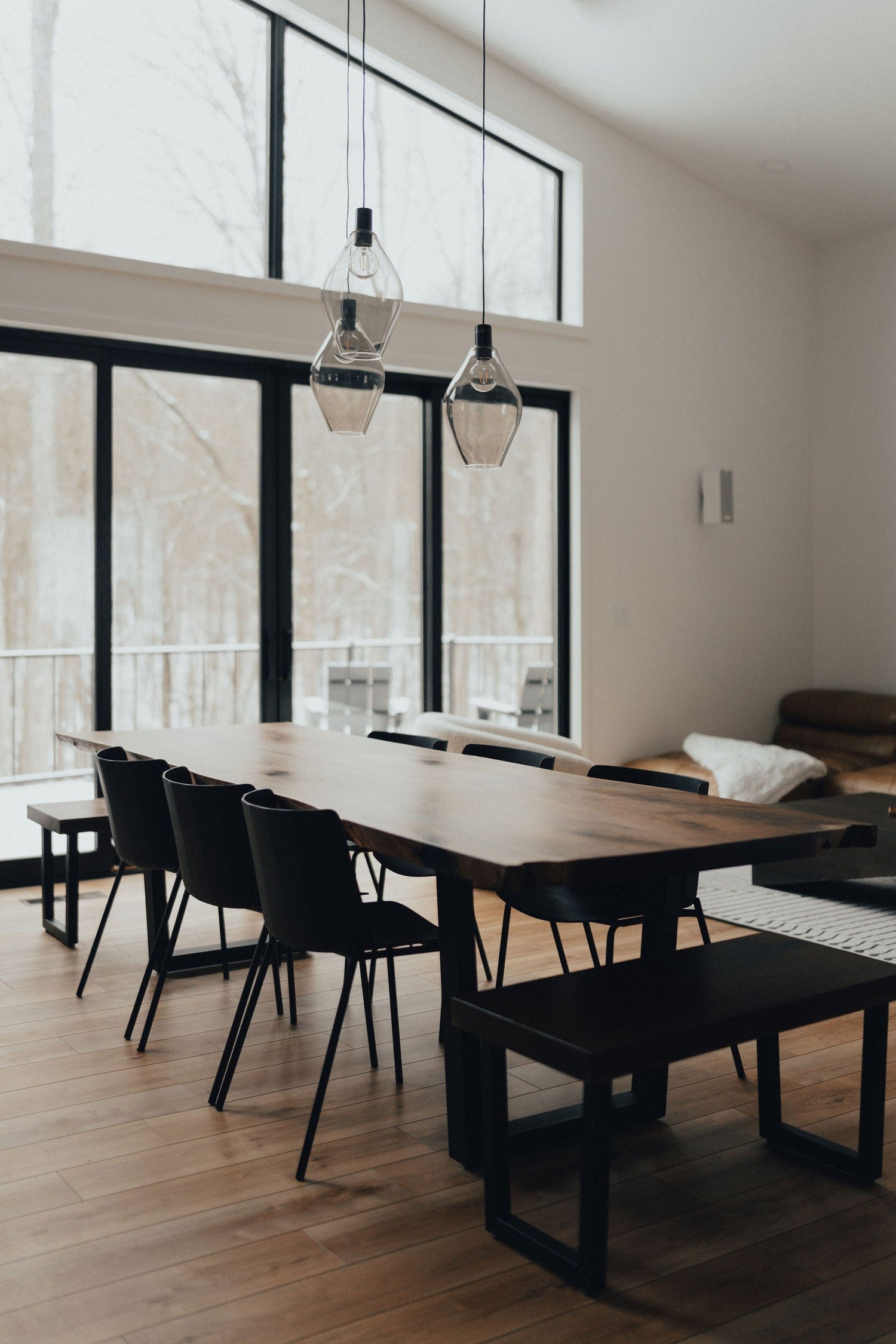Just How to Pick the Perfect Dining-room Table Legs for Your Home Decoration
Choosing the ideal dining-room table legs is a nuanced process that needs mindful consideration of numerous elements, including your room restraints, visual preferences, and sensible requirements. The interaction in between measurements, designs, and products can dramatically influence the setting of your eating area, making it vital to approach this choice carefully. As you consider the myriad alternatives available, it comes to be clear that the appropriate choice prolongs past simple look; it can boost your general dining experience. What factors should you focus on to ensure your selection enhances your home's special character?
Assess Your Eating Area
Examining your dining room is important for picking the right table legs that match both visual appeals and capability. Begin by determining the measurements of your eating location, including ceiling height, floor space, and closeness to various other furnishings. This details will assist figure out the appropriate size and elevation of your eating table, which directly influences the choice of table legs.
Following, consider the style and format of your dining room. An open-concept style may benefit from table legs that offer visual lightness, such as slim steel or acrylic alternatives. Alternatively, a more conventional setup might call for strong wood legs that supply a sense of durability.
Assess the existing shade combination and products in your dining location. Integrating the table legs with these components produces a cohesive look that improves the total design. Additionally, consider the capability called for in your space. For example, if you frequently organize big celebrations, consider legs that give additional support and security.
Inevitably, a comprehensive analysis of your eating area will lead you in making an informed decision, making certain that your table legs not just enhance the aesthetic appeal however likewise serve useful objectives.
Consider Your Design Preferences
When choosing dining area table legs, it is essential to reflect on your personal style preferences, as they considerably influence the total visual of your eating area. Your option of table legs can either complement or contrast with existing decoration, making it critical to straighten them with your recommended interior decoration style.
If your home leans towards a modern aesthetic, consider smooth steel or minimal wood legs that supply a clean, uncluttered look. For a more conventional method, elaborate wooden legs with complex makings can include a touch of sophistication and sophistication. Industrial styles profit from robust, raw products such as redeemed wood and steel mixes, reflecting a tough appeal.
Additionally, farmhouse and rustic designs often prefer strong, chunky legs that evoke a sense of heat and convenience. Conversely, if your decoration is diverse, you might pick non-traditional forms or a mix of products to produce visual rate of interest.

Evaluate Product Options
The choice of material for dining space table legs plays a pivotal role in both resilience and aesthetic allure. Usual products consist of wood, metal, and composite options, each offering distinctive characteristics that can affect the overall appearance and long life of your table.
Wood is a traditional selection, recognized for its heat and convenience. Woods like site link oak and walnut provide remarkable strength and can be finished in different stains to match any type of decoration. Softwoods like pine are a lot more susceptible to scrapes and dents, making them less perfect for high-traffic areas.
Metal legs, often crafted from steel or aluminum, radiate modernity and commercial appeal. They are extremely sturdy and resistant to wear, making them appropriate for families with kids or regular events (dining room table legs). Additionally, steel can be ended up in different shades, improving the customization possibilities
Composite materials, such as MDF or laminate, deal affordability and diverse designs. While generally less sturdy than solid wood or metal, they can still offer a stylish appearance and are typically very easy to preserve.
Eventually, the product you pick need to align with your way of living, aesthetic choices, and the level of use your table will certainly experience.
Determine Height and Dimension
Selecting the ideal height and dimension for your eating area table is essential for both functionality and convenience. The common height for dining tables typically varies from 28 to 30 inches, permitting sufficient legroom for a lot of individuals when seated. Nonetheless, it is vital to consider the measurements of your eating space and the sorts of chairs you intend to use.

Moreover, think about the proportions of your dining-room. get more A bigger table in a sizable area can develop a grand atmosphere, while a smaller sized table works well in even more intimate setups. Ultimately, the right height and dimension will integrate with your general design and improve the eating experience for you and your visitors.
Explore Personalization Opportunities

Furthermore, the layout of the legs can be tailored to fit various styles, such as rustic, modern, or commercial. For instance, conical legs can stimulate a mid-century contemporary feeling, while chunky, block-style legs may resonate with standard or farmhouse design.
Homeowners can also discover shade finishes, from all-natural wood discolorations to paint, enabling them to match or contrast with the tabletop and bordering decoration.
Moreover, leg elevation can be adapted to suit certain seating arrangements or personal preferences, improving both convenience and functionality.
Last but not least, unique embellishments, such as carvings or decorative braces, can further individualize the table legs, making the dining experience not simply a statement however a dish piece in the home. By considering these customization alternatives, property owners can create an eating room table that truly shows their originality.
Final Thought
Picking the ideal dining-room table legs requires mindful consideration of various factors, including the dimensions of the eating area, style choices, product resilience, and desired height. Customization alternatives further improve the ability to attain a natural visual that enhances the total style. By systematically assessing these components, property owners can guarantee that the picked table legs not only meet functional demands however likewise contribute positively to the eating experience and atmosphere of the home.
Choosing the optimal eating room table legs is a nuanced procedure that needs cautious factor to consider of various components, including your space constraints, aesthetic preferences, and practical requirements.Analyzing your eating space is vital for choosing the right table legs that complement both looks and capability.When establishing dimension, determine the area where the table will certainly be placed to ensure it fits easily, allowing for at least 36 inches of clearance around the table for easy movement. A bigger table in a spacious area can develop a grand atmosphere, while a smaller sized table works well in more intimate setups.Selecting the optimal eating area table legs calls for mindful factor to consider of numerous elements, consisting of the measurements of the dining area, design preferences, material durability, and wanted height.
Comments on “Why Dining Room Table Legs Are Crucial for Your Table’s Stability”